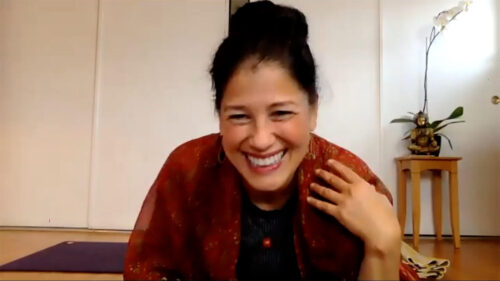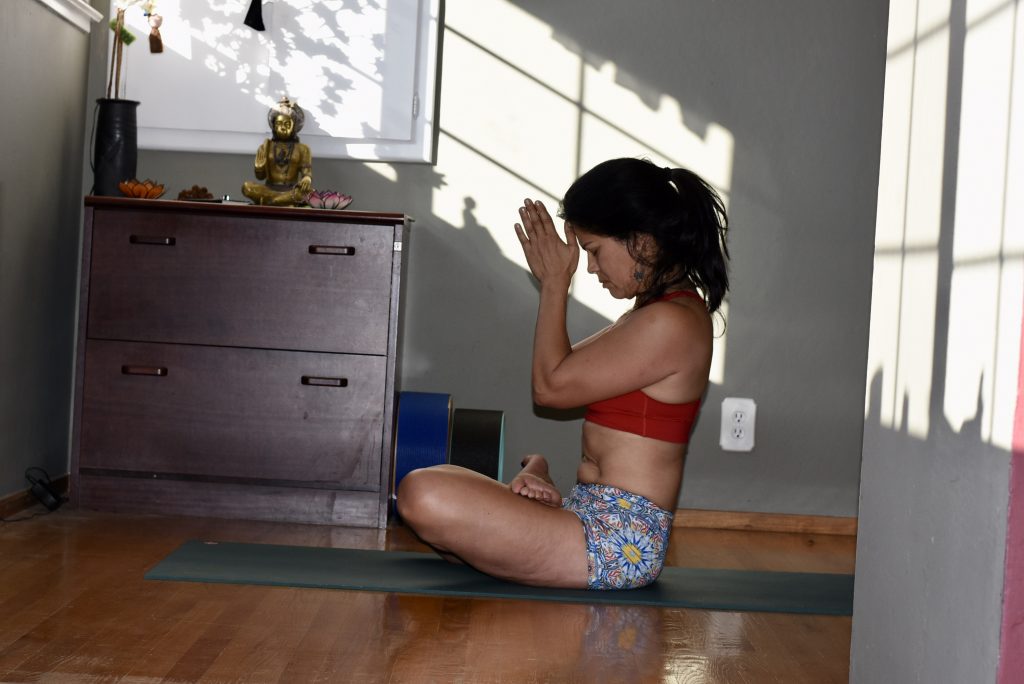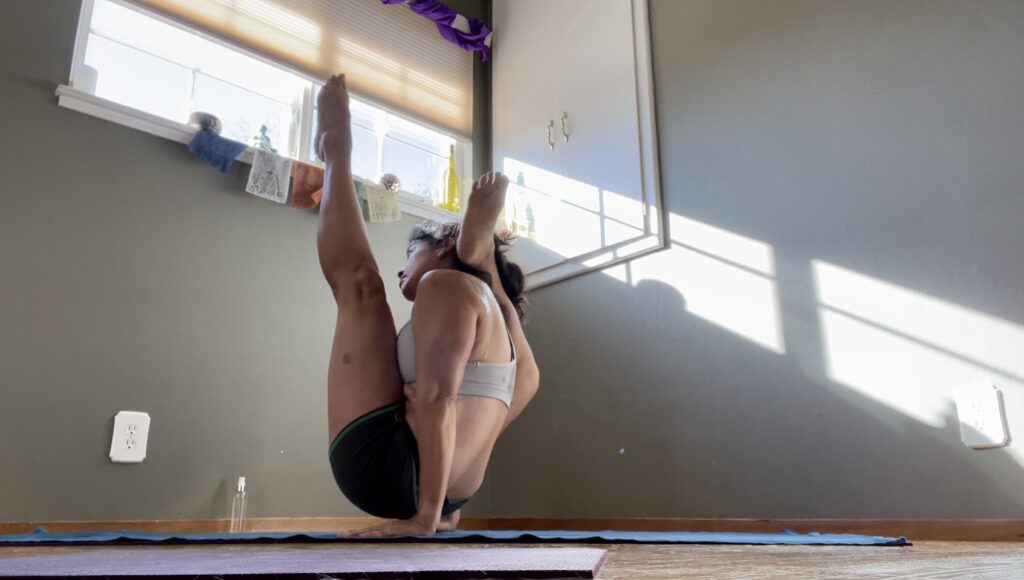energy shifts
Self Care
Recently, the yoga studio sent the teachers an email asking us to respond to some questions about our journey through the first year of the coronavirus (COVID-19) pandemic. The request was to write a few sentences, answering one or all of the following questions
- What have you learned over the past year?
- How has your practice changed, on or off the mat?
- How have you learned to care for yourself and/or others in ways you haven’t before?
 My responses to the three questions was somewhat tarnished with negativity as I was navigating some new territory in my grieving process coupled with a few unfortunate events. [I’m being intentionally vague; this is not the place for that stuff]. The studio owner decided to go with my response to Question #1.
My responses to the three questions was somewhat tarnished with negativity as I was navigating some new territory in my grieving process coupled with a few unfortunate events. [I’m being intentionally vague; this is not the place for that stuff]. The studio owner decided to go with my response to Question #1.
Although I have lived my life trying to put on a happy face for others to see, I didn’t think that I could capture a realistic smile for the post in real time. So, I pulled stills from the class recording of the final session with my Intro to Mysore students that ran in January to accompany the IG post. I was on a high that day – feeling the joy of sharing the practice I have grown to love with 7 beautiful souls. It showed on my face.
The fact that many of our members are going through a lot of struggles right now, it was decided that my response to Question #3 may have been a bit too honest for the BTY IG. Still, I wonder if comfort could be found in knowing that, although I show up wearing my best “happy face”, I too am struggling.
“There are days when I wake up and no amount of coffee or makeup can mask the loneliness and pain that sometimes overwhelms me. I tell myself that I’m not the only one feeling this way and just show up as is. As a result, I help myself by showing up for others.”
I wrote those words, yet was hesitant to do my part and “show up” for this morning’s mysore practice. I rolled out my mat and began my practice offline with only Kobe, my slumbering puppy, in sight and classical music softly playing. The practice wasn’t any easier. But when I met up with kapotasana, the tears had already begun to surface and I had no reason to bury them. I acknowledged the painful emotions and asked [my] God if he/she would keep me safe if I were to shed my armor and allow my heart to open more fully. The tears fell as if to the music: gently, with ebbs and flows all the way through kapotasana and supta vajrasana. Then, Kobe did something cute as I did my bakasana. And I laughed out loud. This short bit of laughter was enough to signal my readiness to show up for my community. So, I joined the mysore zoom.
You see, although for the past year, I have made a point to bury my emotions so that I could show up for my community, I am learning that it’s equally important to take some time to care for myself. This seems especially true right now, with all that I am navigating mentally and emotionally. I’m still here for my family and friends, but I need to grab that oxygen mask and breathe in a few slow, deep breaths so that I can think clearly and be wholly present. If you are going through something similar, I recommend the same to you.
“We can’t share with others a resource that we lack ourselves.” – Johnson, W and Humble, A (2020)
Thanks for reading. Now, it’s time to get on my mat. I wish you all a beautiful day.
Asanas and Aparigraha
Practitioners of the ashtanga yoga are accustomed to working on their “given” poses until their teacher feels they are ready to add the next pose. A lot goes into this assessment. It’s more than just a mastery of the poses they’ve already been practicing daily. It’s an assessment of dedication, concentration, prior injuries, and overall endurance – among other things. Depending on the next pose, the practitioner may be eager to move on OR they may be hesitant. It is not unusual to be stuck on trying to master a given pose for many years.
It is also not unusual to be stuck on the fact that you haven’t been given the next pose.
While you may fear that you may pass on before being given poses later in the sequence you are working on, one may ask, “Why does it matter?” If you die without ever getting to practice the 7 handstands at the end of intermediate series (aka “the 7 deadlies”), people won’t think any less of you. In fact, they may be less likely to think of you as that crazy lady who used to put her legs behind her neck and do a bunch of funny headstands.
“Let your concern be with the action alone, and never with the fruits of action. Do not let the results of your action be your motive, and do not be attached to inaction” – Krishna
sthira bhaga
While LIVE on our Mysore ZOOM, I flow through my morning practice with an acute awareness that my teacher is watching. Not only is she watching, she is waiting for me to finish up my second series already so that she can see what progress I’ve made in the third series poses she gave me last week.
But my practice is slow today and my coffee has yet to kick in. Gasp if you wish; I don’t care what you think. I NEED my COFFEE.
As I lay on my back, working to place my lower leg behind my shoulders, I notice the moon through the window in front of me. In the window of the adjoining bedroom, I can also see the sun’s blessed light. It’s lovely and a part of me wants to spend another 5-10 breaths in yoga nidrasana. But then I remember my teacher. She’s watching. I hear her call the name of one of the other students. The last time she called his name, he was at pasasana, and I was 3-4 poses ahead in the series. I can tell by her words that he is now working on pincha mayurasana. It is clear that today’s practice has not been flowing as steadily as it should. I suppose the time I spent crying BEFORE going into kapotasana slowed me up…a little. Yeah, that was unexpected.
*sigh*
“Okay Juls,” I tell myself (quietly, as my computer is no longer on mute), “just breathe and get moving.” I limp along to the end of second and arrive at third with 30ish minutes until my work meeting. I am sore but have more energy today than last week. I might go well. I mean, miracles DO happen. Right!
WRONG!
Third Series has been described as “Divine stability; sublime serenity.” Reading this description sure makes it sound nice. Right? And, it IS nice. But it’s also HARD. The journey to this point is far from stable or serene (without the added pressure of having it be divine or sublime on top of that). I’m not complaining; I asked for this and I am happy to take it on. Lord knows my side body is weak and could benefit from a little stability – and serenity. My teacher knows this as well.
Nonetheless, I must admit that the difficulty that I am experiencing feels foreign yet satisfying. It feels right to finally be working on creating stability in the side body. And although there are moments when I question if I really deserve to be have these poses, I am super grateful that my teacher has allowed me to go here.
Gratitude Practice
Whether I roll out my mat at the studio or at home, my focus is the same. It is one of gratitude. Yoga is a feeling practice. There is so many other feelings and emotions swirling around in my body and mind but these emotions are the ones I am bringing into focus. As I bring my attention to what is right in my life, the fear, uncertainty, pain, and other feelings fall away.
I am grateful for this beautiful life, my health, my sons’ (lives, love, health, happiness…), the close relationships with my extended family, our dog, my home, job, my practice, and the opportunity to share yoga to others (among so much more).

I invite you try it yourself. It is hard to be fearful when you are focused on gratitude. You may notice that, while in a state of gratitude, it is far easier to make important decisions, create a vision for what you want to manifest, or simply just enjoy the moment.
expectations
One morning, while en route to yoga, I questioned why I was even going. My body ached something fierce and my mind was far from finding acceptance with how I was feeling. It was hard not to set an expectation for a “bad practice.” I reminded myself to have an open mind and not judge what was to come. After all, that *is* the point of the practice: the same sequence of poses, done in the same order, 6 days per week unfolding in a new way each time.
The radio played as I creeped along the freeway. I shook my head, surprised to find traffic so heavy this early in the morning. Ahead of me, the clouds (both dark and light), caught just a hint of the sunlight. It was beautiful and immediately made me feel grateful to have slowed down just enough to notice. Just like that, my mind shifted and I smiled thinking how easily the bad can be turned into something just a little bit better.
As for my practice, I do not recall how far into it before I became aware that I was no longer feeling any signs of discomfort. I guess, like the sunlight behind the clouds, the body to which I awakened also had a few surprises for me. A short while later, even though the pain had left, I told my teacher that I wasn’t sure how deep of a kapotasana I had to offer. A few deep slow breaths into the pose, I felt a sudden wave of release. She had said, “Let go,” and so I did. I let go of fear, my need to protect my heart, and I let go of expectations…at least for a time. And this too was new, for I’ve been holding on to a lot lately.

